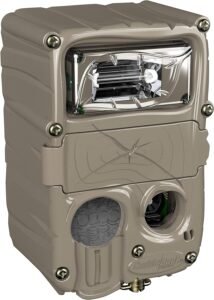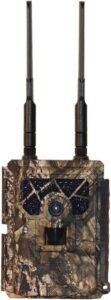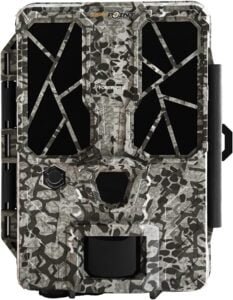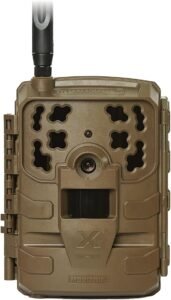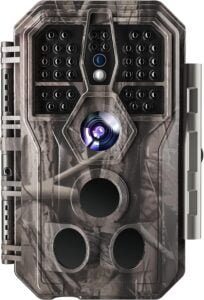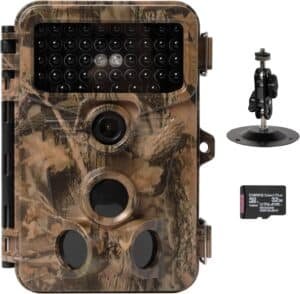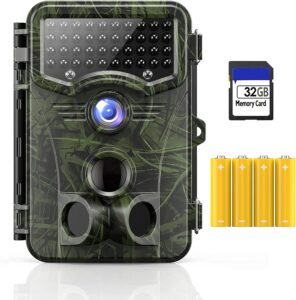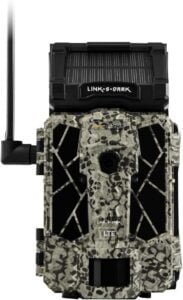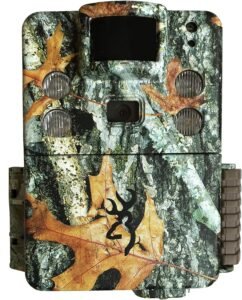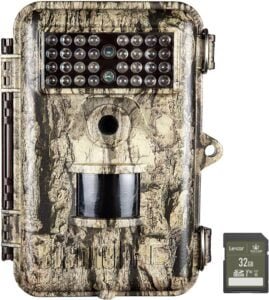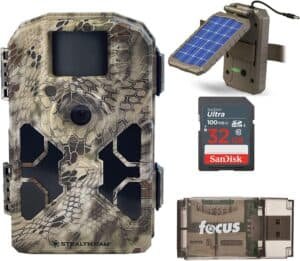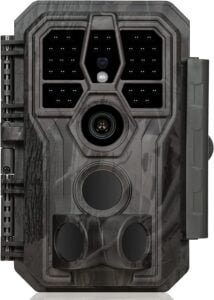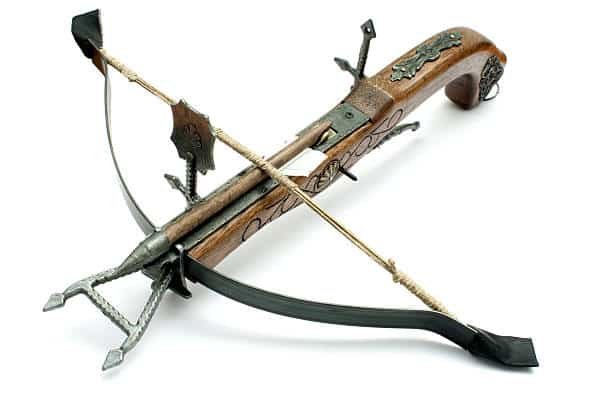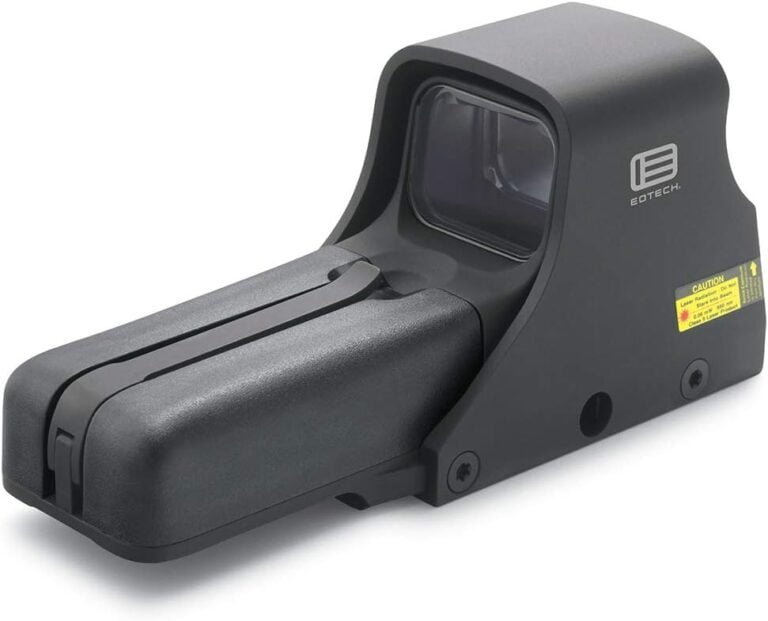Best Hunting Camera for Capturing Secrets in the Dark!
We set out to find the best hunting camera for 2024, and Hee Haw, we did it again! The data was collected by analyzing hundreds of ratings and reviews online. After clicking through the magazine articles, blogs, product reviews, and expert opinions, we’ve viewed enough snapshots to produce our list. Here is the best hunting camera for 2023.
Deer Donkey Rankings
Here are the criteria we used to evaluate the best hunting camera for 2024.
- Night Vision: This is often a crucial aspect, as trail cameras are frequently used for wildlife monitoring and security during nighttime.
- Resolution: Higher resolution provides clearer and more detailed images, which can be important for identification purposes.
- Recording Capability: Higher recording resolution ensures better video quality and detail.
- Trigger Speed: Faster trigger speed allows capturing quick-moving subjects, ensuring fewer missed shots.
- Waterproof: This is essential for outdoor use, ensuring the camera’s durability and protection from the elements.
- Flash: Infrared (night) flash is preferred for discreet nighttime use without startling subjects.
- Power Source: Options like AA batteries or external power provide flexibility and convenience.
- Card Capacity: Adequate card capacity is necessary to store images and videos without frequent data management.
- Screen: While not essential, a screen can be useful for reviewing captured media on-site.
- Network Connectivity: Cellular or WiFi network connectivity enables remote access to images, ideal for surveillance.
- Audio: Some users may value audio recording to capture sound alongside visuals.
We divided the cameras into three categories based on the network capabilities and ranked each one from there. Let’s get started!
Best Hunting Camera – Cellular
- Night Vision Range: 50 ft.
- Resolution: 20MP
- Recording Capability: 1080p
- Trigger Speed: 0.25 seconds
- Flash: Infrared (night vision)
- Waterproof Rating: IP66
- Power: 12 AA batteries or external source
- Storage: MicroSD (not included)
- Display: None
- Network: CuddeLink
- Audio Recording: None
- Click here for more info
- Night Vision Range: 100 ft.
- Resolution: 18MP
- Recording Capability: 1080p
- Trigger Speed: 0.9 seconds
- Flash: Infrared (night vision)
- Waterproof Rating: IP66
- Power: 12 AA batteries or external source
- Storage: MicroSD (not included)
- Display: None
- Network: LTE Cellular
- Audio Recording: None
- Night Vision Range: 80 ft.
- Resolution: 20MP
- Recording Capability: 720p
- Trigger Speed: 0.7 seconds
- Flash: Infrared (night vision)
- Display: 2-inch Screen
- Waterproof Rating: IP66
- Power: AA batteries or external source
- Storage: MicroSD (not included)
- Network: None
- Audio Recording: None
- Night Vision Range: 80 ft.
- Resolution: 20MP
- Recording Capability: 1080p
- Trigger Speed: 0.3 seconds
- Flash: Infrared (night vision)
- Display: 2-inch LCD
- Waterproof Rating: IP66
- Power: 12 AA batteries or external source
- Storage: Compatible with cards up to 32GB (not included)
- Network: Cellular
- Audio Recording: None
Best Hunting Camera - Cellular
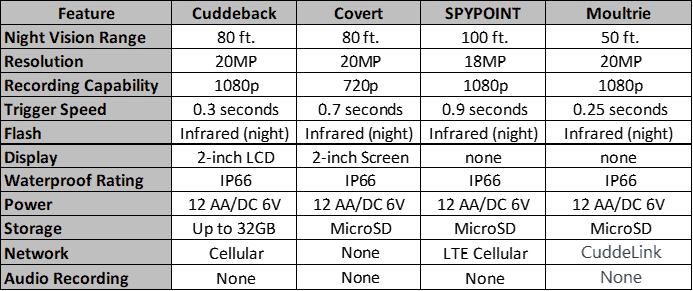
Best Hunting Camera - WiFi
- Night Vision Range: 65 ft.
- Resolution: 20MP
- Recording Capability: 1296p
- Trigger Speed: 0.2 seconds
- Flash: Infrared (night vision)
- Display: 2.4-inch LCD
- Waterproof Rating: IP66
- Power: 8 AA batteries or DC 6V
- Storage: Compatible with cards up to 32GB (not included)
- Network: WiFi
- Audio Recording: Yes
- Night Vision Range: 65 ft.
- Resolution: 20MP
- Recording Capability: 1296p
- Trigger Speed: 0.2 seconds
- Flash: Infrared (night vision)
- Display: 2.4-inch LCD
- Waterproof Rating: IP66
- Power: 8 AA batteries or DC 6V
- Storage: Compatible with cards up to 32GB (not included)
- Network: WiFi
- Audio Recording: Yes
- Night Vision Range: 65 ft.
- Resolution: 20MP
- Recording Capability: 1296p
- Trigger Speed: 0.3 seconds
- Flash: Infrared (night vision)
- Display: 2.4-inch LCD
- Waterproof Rating: IP66
- Power: 6 AA batteries or DC 6V
- Storage: Compatible with cards up to 32GB (not included)
- Network: WiFi
- Audio Recording: Yes
- Night Vision Range: 100 ft.
- Resolution: 12MP
- Recording Capability: 1080p
- Trigger Speed: 0.7 seconds
- Flash: Infrared (night vision)
- Display: 2-inch Screen
- Waterproof Rating: IP66
- Power: Rechargeable or Solar
- Storage: MicroSD (not included)
- Network: WiFi
- Audio Recording: Yes
Comparison Table - WiFi Cameras
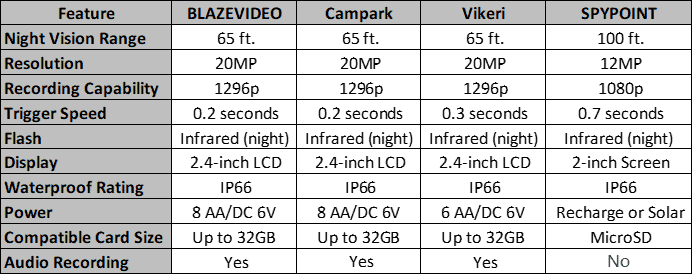
Best Hunting Camera - Card only
- Night Vision Range: 120 ft.
- Resolution: 20MP
- Recording Capability: 1080p
- Trigger Speed: 0.22 seconds
- Flash: Infrared (night vision)
- Waterproof Rating: IP67
- Power: AA batteries or external source
- Compatible with cards up to 512GB (not included)
- Display: None
- Night Vision Range: 100 ft.
- Resolution: 20MP
- Recording Capability: 1080p
- Trigger Speed: 0.2 seconds
- Flash: Infrared (night vision)
- Display: 2.4-inch LCD
- Waterproof Rating: IP66
- Power: AA batteries or external source
- Compatible with cards up to 32GB (not included)
- Night Vision Range: 100 ft.
- Resolution: 16MP
- Recording Capability: 1080p
- Trigger Speed: 0.5 seconds
- Flash: Infrared (night vision)
- Display: 2-inch LCD
- Waterproof Rating: IP54
- Requires 8 AA batteries or DC 12V
- Compatible with cards up to 32GB (not included)
- Night Vision Range: 70 ft.
- Resolution: 24MP
- Recording Capability: 1296p
- Trigger Speed: 0.2 seconds
- Flash: Infrared (night vision)
- Display: 2-inch LCD
- Audio Recording: Yes
- Waterproof Rating: IP66
- Requires 8 AA batteries or DC 6V
- Compatible with cards up to 32GB (not included)
Comparison Table - Card Only Cameras

Deer Donkey Hunting Camera Buyer's Guide
When choosing the best hunting camera, it’s essential to have a solid understanding of what features and specifications to look for. In this trail camera buyer’s guide, we’ll dive into the key aspects you should consider before purchasing.
Water Resistance
First and foremost, let’s talk about the importance of water resistance or waterproof capabilities. Suppose you use your best hunting camera in outdoor environments like forests or fields. In that case, it’s crucial to ensure that it can withstand the elements. A waterproof hunting camera will protect your investment from rain showers and other unforeseen weather conditions that might otherwise damage the device. So make sure to check whether the camera is labeled as waterproof or has an IP (Ingress Protection) rating.
Trigger Time
Next up on our buyer’s guide is trigger time. This refers to how quickly a hunting camera captures an image or starts recording after detecting motion. Trigger time is crucial because you want to avoid your target animal or subject being long gone when your camera kicks into action. Look for a model with fast trigger times, ideally below one second, as this will significantly increase your chances of capturing that perfect shot.
Infrared Sensors
Another feature worth considering is infrared sensors. These sensors allow your hunting camera to capture images or videos in low light conditions or even at night without using a flash that could spook wildlife. Infrared technology ensures discreet monitoring while providing precise and detailed images in any lighting situation.
Built-in WiFi
Let’s discuss built-in WiFi captivities, which can significantly enhance your experience with a hunting camera. With built-in WiFi, it connects and transfers photos and videos wirelessly from your camera to your smartphone or other devices without additional cables or memory cards. This feature allows for quickly sharing exciting wildlife encounters with friends and family on social media while ensuring convenient remote management of your hunting camera settings.
You will find the best hunting camera that suits your needs by considering these critical factors – waterproofing capabilities, trigger time, infrared sensors, and built-in WiFi.
Remember to carefully consider each aspect, and don’t hesitate to compare different models to find the perfect match.
This Donkey Has Your Arse Covered
At TurkeyDonkey.com, we understand how overwhelming it can be to navigate the vast array of choices to find the best turkey game camera. That’s why our dedicated team invests countless hours into meticulous research, scouring forums, and analyzing consumer reviews. We then compile this valuable information into concise and informative comparisons.
Join the thousands of satisfied customers who have relied on TurkayDonkey.com to make informed buying decisions. We are committed to helping our readers spend their hard-earned money wisely by assisting them in finding the perfect product that suits their needs. Experts conduct our reviews independently, and our shopping recommendations are driven by reliable data, empowering you to find the ideal camera that matches your requirements.
By leveraging user data, we gain insights into decision-making processes, enabling us to present each user with the best products tailored to their specific or general needs. We continuously update our content, searching for new merchants and products to compare.
Disclosure: Our website contains affiliate links, which means we may receive compensation if you purchase from recommended websites. We test and review these products independently and do not accept free products or incentives in exchange for positive reviews. Any opinions expressed here are our own.
CuddeLink Wireless Hunting Camera Network
CuddeLink is a wireless hunting camera networking system developed by Cuddeback, a leading manufacturer of hunting cameras and outdoor equipment. CuddeLink allows multiple Cuddeback trail cameras to communicate with each other and create a network of cameras in the field.
The key feature of CuddeLink is its ability to send images from multiple remote cameras to a single home camera, which acts as a central receiving hub. This hub camera can be equipped with a CuddeLink Cell module (optional) to enable cellular connectivity, allowing you to receive images directly to your smartphone or computer from the hub camera.
Here’s how the CuddeLink system works:
Remote Cameras: Each CuddeLink trail camera in the field operates as a remote camera. These cameras capture images or videos when triggered by motion or heat, just like traditional trail cameras.
Home Camera: One of the CuddeLink cameras is designated as the “home” camera or the central hub. This camera is responsible for collecting images from all the remote cameras within its communication range.
Communication: The CuddeLink cameras use a proprietary wireless mesh network to communicate with each other. When a remote camera captures an image, it sends the image to the home camera. If other remote cameras are within the communication range of the home camera, they will also send their images to the home camera.
Receiving Images: If the home camera has a CuddeLink Cell module (optional), it can transmit the collected images to your smartphone or computer through a cellular network, allowing you to view the images remotely.
CuddeLink offers several advantages:
Extended Range: The communication range between the cameras can be extended, allowing you to set up cameras in a larger area while still receiving images at a central location.
Reduced Travel: Instead of visiting each remote camera separately to check images, you only need to visit the home camera to access all the images from the network.
Cost-Effective: With CuddeLink, you can use multiple cameras without the need for separate cellular plans for each camera. The CuddeLink Cell module (if used) enables remote image transmission without additional subscription costs.
Overall, CuddeLink provides an efficient and convenient way to manage multiple trail cameras in the field, making it popular among hunters, wildlife researchers, and outdoor enthusiasts who want to monitor and capture images from various locations using a networked system.

